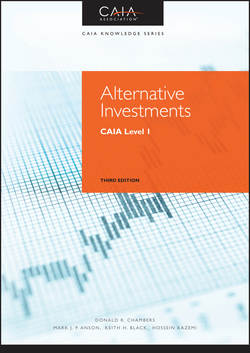Читать книгу Alternative Investments - Hossein Kazemi - Страница 54
PART One
Introduction to Alternative Investments
CHAPTER 3
Quantitative Foundations
3.5 Distribution of Cash Waterfall
3.5.5 Clawbacks and Alternating Profits and Losses
ОглавлениеClawbacks are relevant to funds that calculate carried interest on a fund-as-a-whole basis. The idea of typical clawback provisions is that incentive fees distributed to managers are returned when a firm experiences losses after profits so that the total incentive fees paid, ignoring the time value of money, are equal to the incentive fees that would be due if all profits and losses had occurred simultaneously. Funds experience early profits and late losses in two primary instances. In private equity funds, it is possible that a few of the projects in which the fund has invested may successfully terminate and generate large cash inflows and profits to the fund. Other projects may fail at a later date, thereby generating large losses or write-offs. An important issue when a fund experiences large gains early in its life, followed by subsequent losses, is whether incentive fees paid on the early profits will be returned to the LPs.
Another instance in which losses follow profits is more common in the hedge fund industry, where market conditions or managerial decision-making can cause strategies to be highly successful in one time period and then highly unsuccessful in a later time period. In this case, the fund earns high profits followed by large losses.
In both cases, it is possible that incentive fees, or carried interest, could be paid during the earlier profitable stage, even though subsequent losses could cause the investment to have no profit over its entire lifetime. Thus, a limited partner could end up paying incentive fees for an investment that lost money over its lifetime. Clawback provisions are designed to address this problem for limited partners.
APPLICATION 3.5.5A
Consider a fund that calculates incentive fees on a fund-as-a-whole basis and makes two investments, A and B, of $10 million each. Investment A is successful and generates a $10 million profit after three years. Investment B is not revalued until it is completely written off after five years. Assume that the fund managers are allowed to take 20 % of profits as carried interest calculated on an aggregated basis. How much carried interest will they receive if there is no clawback provision, and how much will they receive if there is a clawback provision?
Without a clawback provision, the fund earned $10 million after three years and distributed a $2 million carried interest to the managers. When the second investment failed, the incentive fee is not returned. In the case of a clawback provision, the fund distributed a $2 million incentive fee to the managers after three years, but when the second investment failed, the incentive fee is returned to the limited partners, since there is no combined profit.
The goal of clawback provisions is to protect the economic split agreed between the GP and LPs. The clawback provision is sometimes called a giveback or a look-back, because it requires a partnership to undergo a final accounting of all of its capital and profit distributions at the end of a fund's lifetime. Clawback provisions are the opposite of vesting. Vesting of fees is the process of making payments available such that they are not subject to being returned.
A clawback provision is a promise to repay overdistributions, but such a promise is only as good as the creditworthiness of the GP. The GP is normally organized as a limited liability vehicle with no assets other than the interest in the fund. In the partnership agreements of many funds, the clawback provision simply binds the GP and requires his or her cooperation and financial support.
The sentiment that clawbacks are worthless is not uncommon. Situations arise in which LPs are unable to receive the clawbacks they are owed. Attempting to enforce the clawback provisions may lead to years of litigation without resulting in any return of cash. The simplest and, from the viewpoint of LPs, most desirable solution is to ensure that the GP does not receive carried interest until all invested capital has been repaid to investors. With this approach, however, it can take several years before the fund's team sees any gains, and it could be unacceptable or demotivating to the fund managers. An accepted compromise for securing the clawback obligation is to place a fixed percentage of the fund manager's carried interest proceeds into an escrow account as a buffer against potential clawback liability.
Clawbacks typically refer to GP clawbacks, or corrective payments to prevent a windfall to the fund manager. However, it is also possible for LPs to receive more than their agreed percentage of carried interest. Consequently, some partnership agreements also address so-called LP clawbacks.
